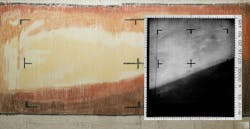NASA highlights how its imaging tech has changed how the world sees Mars
PASADENA, Calif. - In 1965, NASA’s Mariner 4 mission brought Mars into American living rooms, where TV sets showed fuzzy black-and-white images of a cratered landscape. The spacecraft took 21 complete pictures — the first ever captured of another planet — as it flew by as close as 6,118 miles (9,846 kilometers) above the surface, NASA's Jet Propulsion Laboratory writes. Continue reading original article.
The Military & Aerospace Electronics take:
16 July 2025 - The National Aeronautics and Space Administration traces the technological lineage starting with the imaging equipment onboard Mariner4 in 1965. Over time, orbiters equipped with progressively more sophisticated cameras have been deployed, each bringing enhanced detail and clarity to Martian exploration .
A major milestone came in 2006 with the Mars Reconnaissance Orbiter (MRO) carrying the High-Resolution Imaging Science Experiment (HiRISE). HiRISE can resolve objects as small as a meter, enabling detailed mapping of dunes, boulders, and ancient impact craters.
Later, Curiosity (2012) and Perseverance (2021) carried multiple high-resolution, color cameras. Perseverance notably introduced high-speed cameras that captured its dramatic landing sequence - from parachute deployment to its descent stage fly-away.
Related: NASA selects three new instruments to advance lunar science
Related: Firefly Aerospace unveils commercial lunar imaging service
Related: Nuclear engine with NASA support could send humans to Mars in 45 days
Jamie Whitney, Senior Editor
Military + Aerospace Electronics
